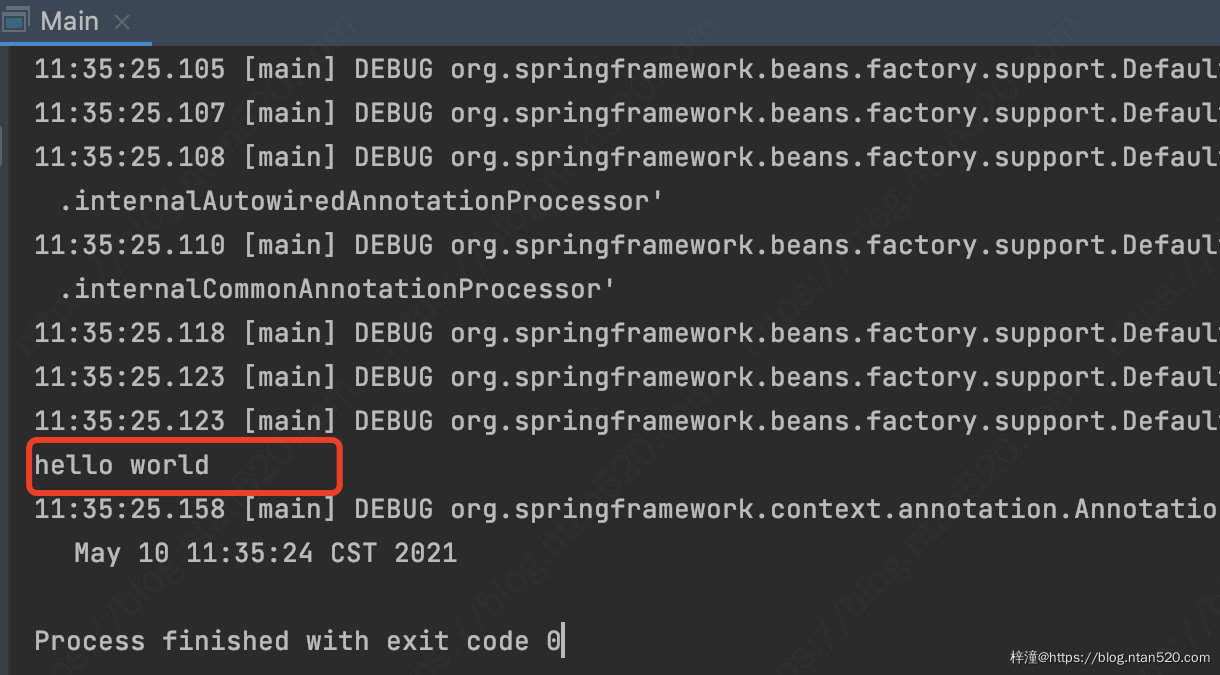文章内容
spring中是如何区分每一个bean的?主要是通过以下三种方式:
一、通过XML中的name或者是id属性
1、User类
public class User {
private String name;
public User(String name) {
this.name = name;
}
public String getName() {
return name;
}
public void setName(String name) {
this.name = name;
}
public void hello() {
System.out.println("name:" +"hello world");
}
}
2、spring.xml文件,在xml文件中配置bean
<?xml version="1.0" encoding="UTF-8"?>
<beans xmlns="http://www.springframework.org/schema/beans"
xmlns:xsi="http://www.w3.org/2001/XMLSchema-instance"
xsi:schemaLocation="http://www.springframework.org/schema/beans
http://www.springframework.org/schema/beans/spring-beans.xsd">
<bean id="user" class="com.example.demo.bean.User">
<constructor-arg value="愚公要移山"/>
</bean>
</beans>
在resource目录下面新建了一个META-INF目录,用于存放spring.xml文件。这个文件中使用了id来区分不同的bean。
3、测试
public class Main {
public static void main(String[] args) {
String xmlPath = "META-INF/spring.xml";
ApplicationContext applicationContext = new ClassPathXmlApplicationContext(xmlPath);
//从spring容器获得
User user = (User) applicationContext.getBean("user");
user.hello();
}
}
4、运行结果

二、通过注解的方式
1、声明Bean的注解
- @Component组件,没有明确的角色。
- @Service在业务逻辑层(Service层)使用。
- @Repository在数据访问层(dao层)使用。
- @Controller在展现层使用。
它们默认没有直接指定bean的name,所以bean的name是spring自动生成的。bean的name生成规则如下:
- class的simpleName如果大于1个字符且第二个字符是大写字母,则simpleName就是bean name
- 如果class的simpleName是1个字符或者第2个字符是小写,则将首字母转为小写的字符串作为bean name
举例 “FooBah”的bean名称变成了”fooBah”,”X” 变成了 “x”,”URL” 依然是”URL”。
注意:
若不同的包下有两个名字相同的类,而这两个类都声明成spring的bean,这时候就会产成冲突。因为bean的名字就是bean的唯一标示,是不允许重复的。
2、UserService
public class UserService {
public void hello() {
System.out.println("hello world");
}
}
3、config配置
@Configuration
@ComponentScan("com.example.demo.bean")
public class JavaConfig {
}
4、测试
public class Main {
public static void main(String[] args) {
AnnotationConfigApplicationContext context = new AnnotationConfigApplicationContext(JavaConfig.class);
UserService teacherService = (UserService) context.getBean("userService");
teacherService.hello();
context.close();
}
}
5、运行结果

三、通过Java配置
Java配置是通过@Configuration和@Bean来实现的。
- @Configuration声明当前类是一个配置类,相当于一个Spring配置的xml文件。
- @Bean注解在方法上,声明当前方法的返回值为一个Bean。
- @Bean 注解声明的方法名是放入spring容器的bean的name。
1、JavaConfig
@Configuration
@ComponentScan("com.example.demo.bean")
public class JavaConfig {
@Bean
public UserService getStudentService() {
UserService userService = new UserService();
return userService;
}
}
此时的bean注解到了方法上,根据上面的定义,此时的bean是返回类型UserService,因此返回的结果也是。
2、测试
public class Main {
public static void main(String[] args) {
AnnotationConfigApplicationContext context = new AnnotationConfigApplicationContext(JavaConfig.class);
UserService teacherService = (UserService) context.getBean("userService");
teacherService.hello();
context.close();
}
}
3、运行结果

